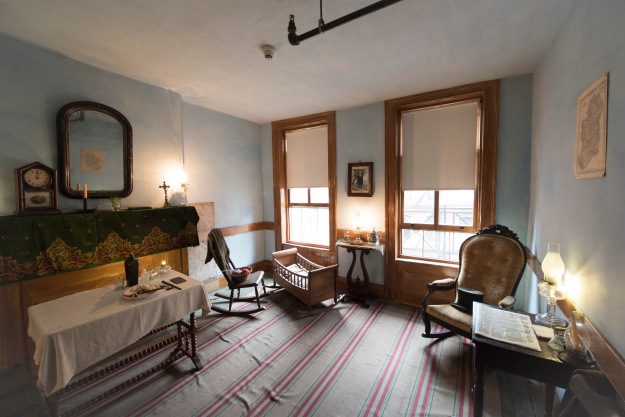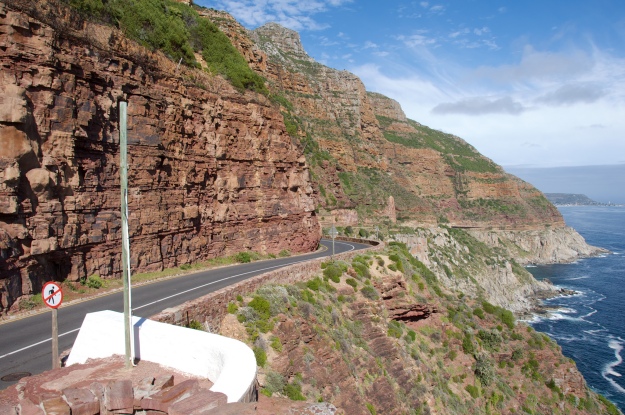Even being of full Irish heritage, as both a first- and third-generation Irish American, I’m embarrassed to say that I seem to forget to acknowledge St. Patrick’s Day. For shame! But in New York City, there are many reminders of the legacy of the Irish around me. Along with St. Patrick’s Day Parades and Irish pubs throughout its five boroughs, there are noted locations that can put you directly in touch with Irish culture and history – all the way up to the present day.
Here is my list of suggested places to learn more about the Irish in New York City. While most of these locations can be seen by the general public, it’s best to check their websites for hours of operation and ticket prices.

Credit: NPS photo
Ellis Island
From 1892 to 1954, 12 million immigrants came through this immigration inspection station, arriving via boats. Did you know that the first passenger to be processed through Ellis Island was said to be Irish? Annie Moore, a young woman from County Cork, was that person was initially registered through. Part of the National Parks Service, visitors can head to Ellis Island on daily cruises and walk through its great hall that once had clerks interviewing and inspecting new arrivals. Make plans to spend time in its immigration museum and sign up in advance for a guided hardhat tour, offered through Save Ellis Island, of an area that once functioned as a hospital.

Photo by Liz Clayman, courtesy of the Lower East Side Tenement Museum
Lower East Side Tenement Museum
This former tenement turned museum on Manhattan’s Lower East Side is a prime example of how immigrants such as the Irish settled in and built new lives in their new homeland. In fact, an Irish family once resided in this building, a former tenement at 97 Orchard Street that had housed nearly 7,000 working class immigrants. In 1869, the Moores came to live here. Their restored home inside this museum can be visited on guided tours. This tour, called “Irish Outsiders,” also delves into some of the hardships the Moore family faced. (Note: Ticketholders meet at the Visitors Center at 103 Orchard Street.)

Credit: Merchant’s House Museum Facebook page
Merchant’s House Museum
As for finding work, the Irish took on various labor-intensive jobs, one of them being as household servants. Between what’s now the Bowery and Lafayette Street, the prominent Tredwell family owned this 19th well-preserved rowhouse on East 4th Street for nearly a century (the last member lived here until her death in 1933 at age 93). While the Tredwells are much discussed, their Irish servants also get attention. Most information known about these four female employees is from census records. However, it’s common knowledge that their hours were long and pay was low, but they definitely were instrumental in running a household. On St. Patrick’s Day 2017, the museum will host guided tours relating to these servants throughout the day, plus a candlelight version at night.

Creative Commons Flickr photo / Ken Lund
Basilica of St. Patrick’s Old Cathedral
Most people know about St. Patrick’s Cathedral on Fifth Avenue in Midtown, but its older cousin is set in NoLita. On the corner of Mott and Prince streets, this minor basilica once surrounded an improved Irish neighborhood but now caters to a multicultural congregation. During the mid-1800s, at a time when Irish Catholics faced much backlash and bigotry, the church got an outer brick wall for protection after an attempted ransacking and the threat of being burnt down. The church’s history also states that young Irish lads from the neighborhood also provided security as a militia that would become New York’s 69th Regiment (also known as the Fighting Irish). The cathedral has underground mortuary vaults and a cemetery, featuring a who’s who of prominent Catholic New Yorkers from the 16th through 18th centuries. You’ve also may have seen the church in “The Godfather” and “The Godfather Part II” movies.
Columbus Park
The surroundings of this public park in Chinatown were once adjacent to the Five Points, a rough neighborhood slum known for its portrayal in the film version of the book, “Gangs of New York.” Conditions were so bad here, that photographer/social reformer Jacob Riis made an entire chapter about the Five Points in his book, “How the “Other Half Lives.” At one point in its history, the Five Points had an Irish population that was referred to being the largest outside of Dublin. Other ethnicities that came to live here throughout the mid-to-late 19th century included African Americans, German Jews, and Italians (who would go on establish another neighborhood, Little Italy). In the early 20th century, the area around the Five Points was consumed by a growing Chinatown. The area got some new life too, with plans to replace tenements with trees and flowers within a park setting. A developed green space called Mulberry Bend Park (what Columbus Park was once called) opened in the summer of 1897. Columbus Park got its present-day name in 1911; it’s for Christopher Columbus.
Irish neighborhoods within Queens, Brooklyn, and the Bronx
Irish culture in NYC goes beyond Manhattan, as past and present communities developed. So definitely put extra money on your subway card for trekking to these areas in the outer boroughs. For starters, The Bronx section of Woodlawn, nicknamed “Little Ireland,” has a hearty Irish population, with pubs like Behan’s Pub and the expansive Van Cortland Park. Queens has Rockaway Park, Woodside, and Sunnyside, and Brooklyn’s got Bay Ridge, Windsor Terrace, and Gerritsen Beach, plus Vinegar Hill has a lengthy Irish history.

















